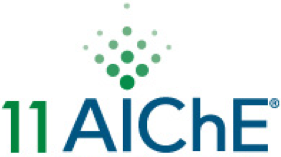

Redox flow batteries (RFBs) are being developed for large-scale energy storage, uninterruptable grid-independent power supplies and load-leveling systems for solar or wind power. Aqueous chemistries are used for all current commercial RFBs, therefore, cell potentials are limited to the stability range of water (0?1.23 V vs. SHE). Since a battery's cell potential determines its energy and power density, aqueous chemistries limit the possibilities for the performance of RFBs.
Several non-aqueous systems have been reported recently, including systems based on ruthenium, uranium, chromium, manganese, and vanadium coordination complexes [1-5]. In the case of vanadium acetylacetonate, the use of a non-aqueous electrolyte results in a stable cell potential window of 2.2 V [5], more than 50% wider than the aqueous single-metal vanadium chemistry (1.26 V [6]). However, very few results from battery charge/discharge experiments have been shown for this non-aqueous vanadium system.
This talk will examine the charge/discharge profile for the vanadium acetylacetonate (V(acac)3) RFB system in acetonitrile, with tetraethylammonium tetrafluoroborate (TEABF4) support. The effects of active-species concentration on battery performance were examined. Linear sweep voltammetry will be used to determine the maximum charge/discharge rate of the battery cell as a function of electrolyte composition. Figure 1 shows the first five cycles of a charge/discharge result for 0.4 M V(acac)3, 0.5 M TEABF4 in acetonitrile. Coulombic, energy, and power efficiency for charge/discharge experiments were examined as a function of concentration to illustrate the effects of active species crossover. Efficiency and energy density were balanced to determine an optimal active species concentration range for operation of the battery. Lastly, the non-aqueous system was compared to the optimized aqueous all-vanadium system to identify areas of future work.
Experiment: First five cycles of a charge/discharge experiment for an all-vanadium non-aqueous redox flow battery chemistry. The system was charged at 3 mA until 50% theoretical state of charge and discharged at 2 mA until 0.4 V. The system shown is 0.4 M vanadium acetylacetonate supported by 0.5 M tetraethylammonium tetrafluoroborate in acetonitrile solvent. An H-cell configuration was used with graphite plate electrodes and a Neosepta AHA anion exchange membrane.
REFERENCES
1. Matsuda Y, Takasu Y, Morita M, Tanaka K, Okada M, Matsumura-Inoue T (1985) Denki Kagaku 53:632
2. Yamamura T, Shiokawa Y, Yamana H, Moriyama H (2002) Electrochim Acta 48:43
3. Liu Q, Shinkle AA, Li Y, Monroe CW, Thompson LT, Sleightholme AES (2010) Electrochem Comm 12:1634
4. Sleightholme AES, Shinkle AA, Liu Q, Li Y, Monroe CW, Thompson LT (2011) J Power Sources 196:5742-5745
5. Liu Q, Sleightholme AES, Shinkle AA, Li Y, Thompson LT (2009) Electrochem Comm 11:2312
6. Ponce de Leon C, Frias-Ferrer A, Gonzalez-Garcia J, Szanto DA, Walsh FC (2006) J Power Sources 160:716-732
